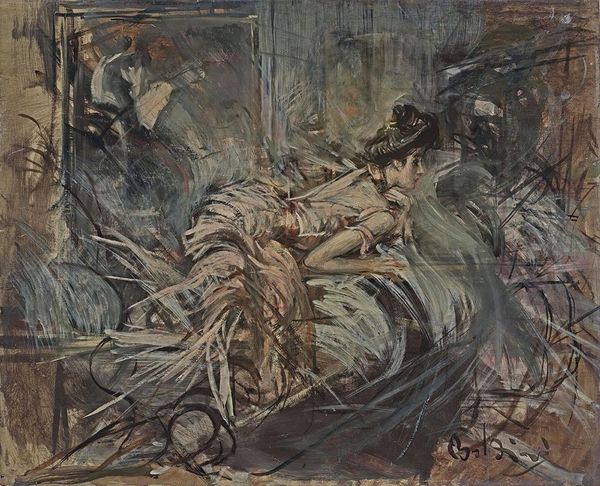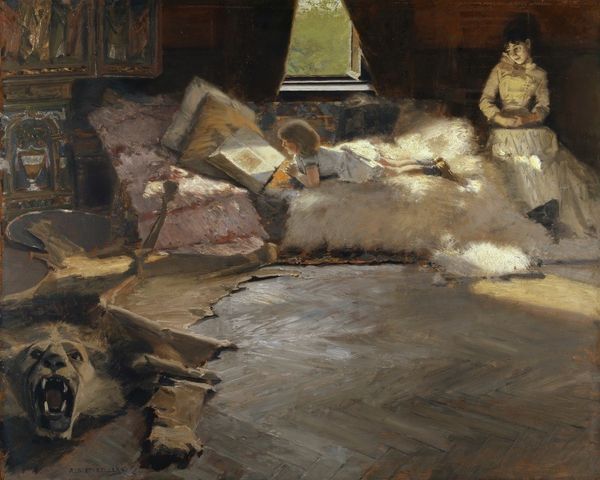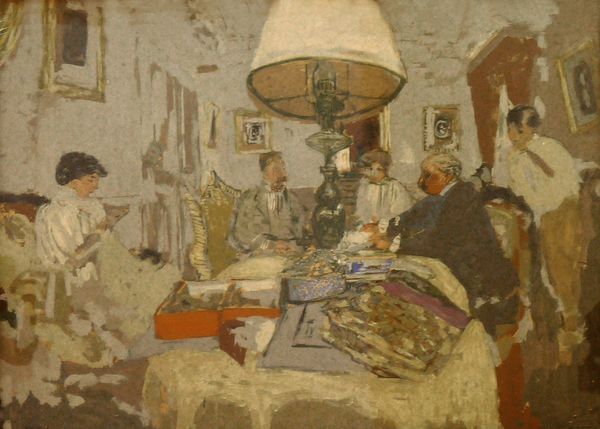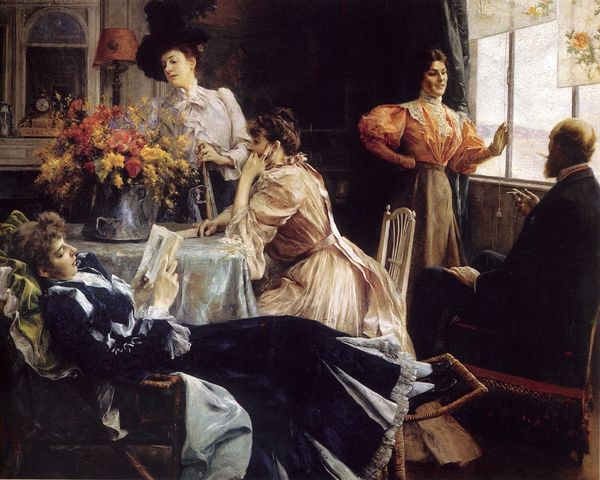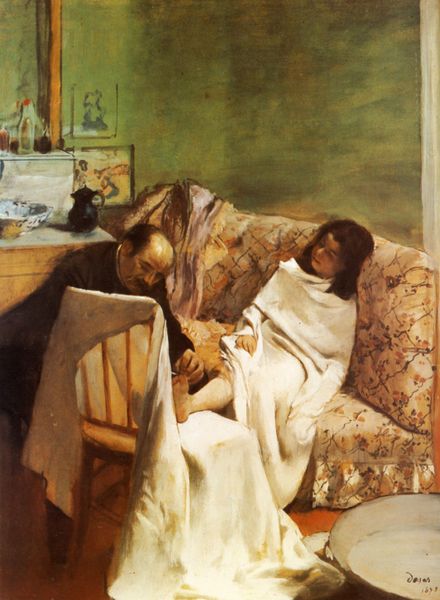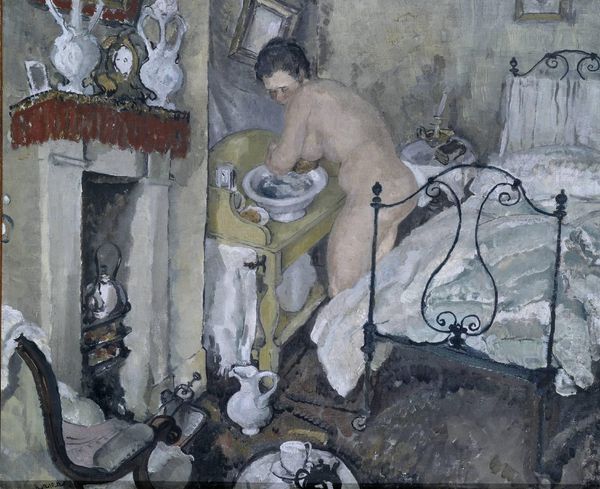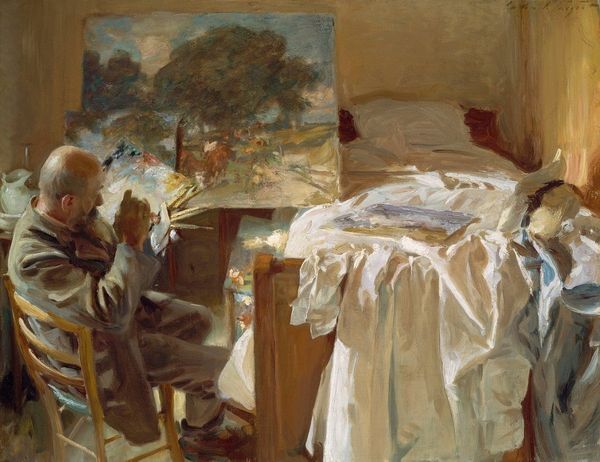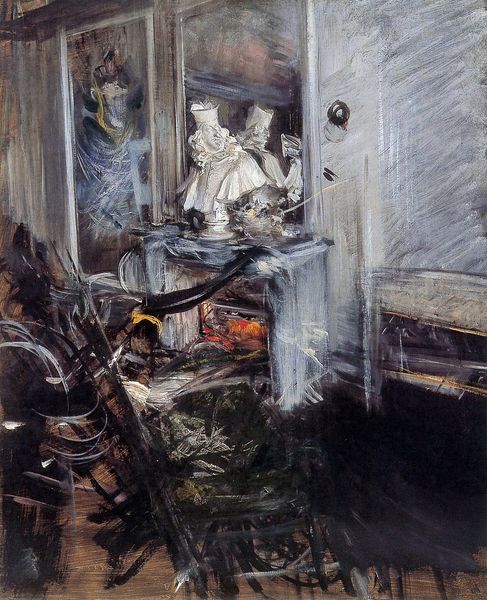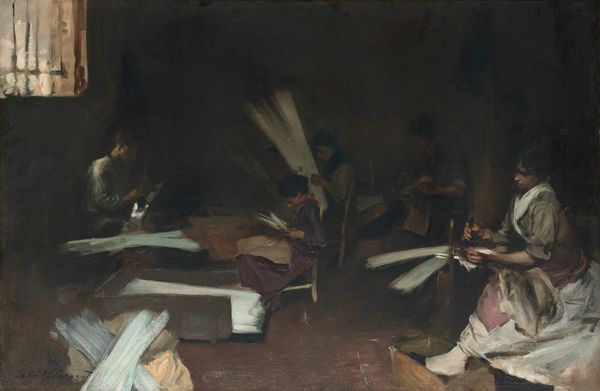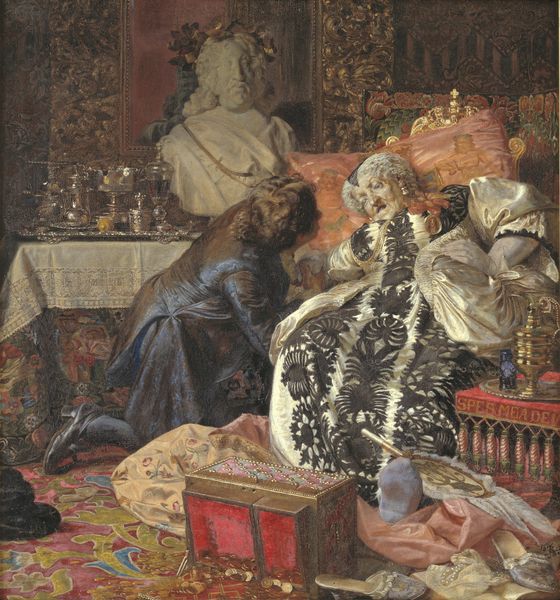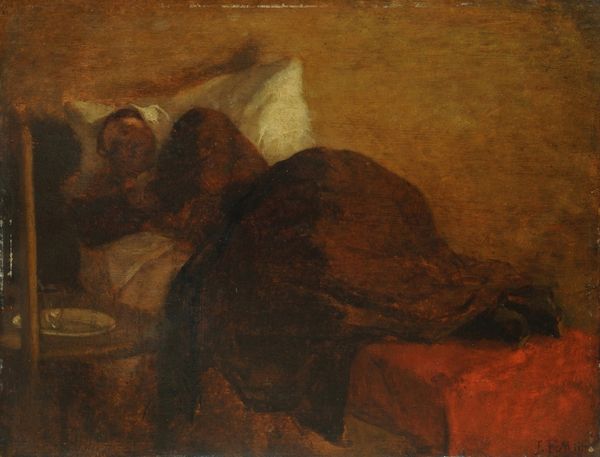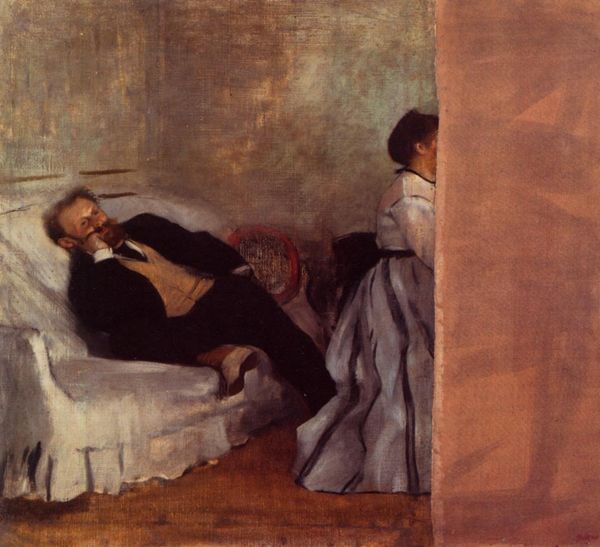
Copyright: Public domain
Curator: This is Domenico Induno’s "Sertine School," painted in 1865 using oil on canvas. Editor: It’s so dark! My first impression is the dramatic lighting… like a stage set. There is an intense spotlight on the woman in the foreground, drawing attention to her personal vanity in stark contrast to the dim environment and surrounding figures. Curator: Absolutely. Induno captures a scene of feminine craft and intimacy here, but also a reflection of emerging ideals. Consider the mirror and the emphasis on feminine presentation and adornment within a controlled setting. Editor: I’m really drawn to the visible brushwork here, the almost frantic strokes give a tangible quality to the silks and textures. It really makes you think about the artist laboriously constructing this very private scene for presumably public viewing. Curator: Yes! Observe also how the objects, such as the cards scattered across the room and the boxes, create a specific, symbolic composition. Consider what role fate, games, and fortunes may have played in the social imaginary of the era, and what connections Induno wants us to draw between games of chance and the everyday rituals performed by young women. Editor: The composition and brushstrokes definitely invite questions around material realities – what was being produced here? Was the production of this material a mode of domestic subjugation or economic liberation? Or something in between? How are these women's lives being built with fabric, with needles, and with thread? The subdued colors even reinforce this materiality as something used and slightly worn. Curator: Fascinating! Induno presents this workshop setting with an inherent sense of continuity with images of women working collaboratively throughout the centuries— and yet filtered through a contemporary obsession with display and appearance. The faces, although hard to discern, radiate a mix of pensiveness and focus. They have this enigmatic quality, characteristic of Romantic-era portraiture. Editor: To come full circle, the piece also acts as material in itself. Oil paint allowed for layers and details unavailable to many artists who came before, and so it allowed them to record, in a more "realistic" way, details from everyday life for a buying audience. The layers upon layers add up and up into a document. Curator: Beautifully stated. I hadn't quite framed it that way before. Editor: Thanks. Now that you point it out, I do see the artist's play with light and shadow hinting at complex states of mind at work there.
Comments
No comments
Be the first to comment and join the conversation on the ultimate creative platform.
